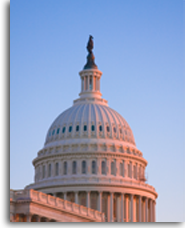This item by J.P. Green was originally published on January 2, 2012.
In his The Plum Line column, Greg Sargent reports on “The GOP’s game plan to end Obama’s presidency,” based on “the book,” a 500-page memo the GOP has compiled, featuring the President’s quotes and videos the Republican plan to use against him. Sagent explains:
National Republicans who are putting together the battle plan to defeat Obama face a dilemma. How do they attack Obama’s presidency as a failure, given that voters understand just how catastrophic a situation he inherited, continue to like Obama personally, and see him as a historical figure they want to succeed?…The answer is simple: Republicans will make the argument that Obama fell short of expectations as he himself defined them.
…The game plan is to remind Americans of the sense they had of Obama as a transformative figure in order to claim that he fell short of the promise his election seemed to embody:
One reason for the strategy, notes Sargent, is President Obama’s likability. The GOP apparently is concerned that personalized attacks against the President could backfire, because polls indicate that many who disapprove of his record like him nonetheless.
The “Obama vs. Obama” strategy is rooted in a double-barreled assault: “Republicans will now attack him for failing to transcend partisanship and achieve transformative change.” Sargent elaborates on the strategy’s built-in weakness :
…Obama had barely been sworn into office before the national Republican leadership mounted a concerted and determined effort to prevent any of Obama’s solutions to our severe national problems from passing, even as they openly declared they were doing so only to destroy him politically. Republicans have admitted on the record that deliberately denying Obama any bipartisan support for, well, anything at all was absolutely crucial to prevent voters from concluding that Obama had successfully forged ideological common ground over the way out of the myriad disasters Obama inherited from them.
Further, polls indicate that the public is not likely to be hustled by the GOP faulting Obama for inadequate bipartisanship, especially since the president has taken so much heat from inside his party about excessive bipartisanship. Most voters now know that Republicans have no intention of extending anything resembling a bipartisan spirit toward the President. Blaming the President for the failure of bipartisanship is a very tough sell.
The second prong of the GOP strategy, blaming the President for the failure to achieve transformative change, is also made problematic by the public’s awareness of Republicans’ refusal to negotiate in good faith on anything. Also, whether you like the Affordable Care Act or not, Dems can make a compelling case that the legislation is, in fact, transformative. Dems, however, have failed thus far to vigorously defend the legislation and ‘sell’ the extraordinary benefits of the act for millions of citizens. It’s about turning the ACA into a political asset, instead of a source of concern.
In terms of the economy, Sargent notes another major flaw in the GOP strategy:
While it’s true that disapproval of Obama on the economy is running high over government’s failure to fix the economy, the independents and moderates who will decide the presidential election agree with Obama’s overall fiscal vision — his jobs creation proposals and insistence on taxing the wealthy to pay for them. They also recognize that Republicans are more to blame than Dems for government’s failure to implement those proposals…
If the Republicans stick with the flawed strategy of ‘the Book,’ Democrats shouldn’t have much trouble crafting a persuasive response. In a way, GOP complaints about the failure of bipartisanship and the inability to create transformative change call attention to their responsibility for both failures. Instead of ‘Obama vs. Obama,’ their strategy could end up looking like ‘Republicans vs. the GOP.’



